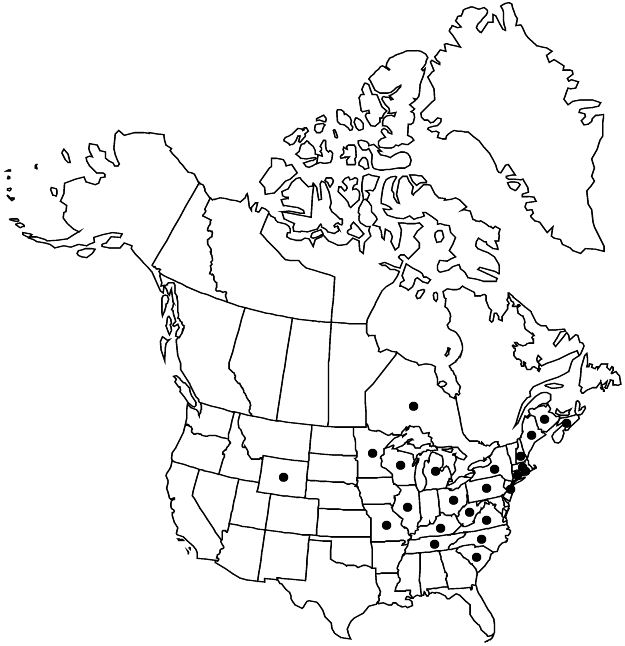Difference between revisions of "Malus baccata"
Theor. Prakt. Handb. Forstbot. 2: 1280. 1803.
FNA>Volume Importer |
FNA>Volume Importer |
(No difference)
| |
Revision as of 23:13, 16 December 2019
Trees, 100–140 dm. Stems to 30 cm diam.; bark dark gray with platelike scales; young branches reddish orange and glabrous, becoming reddish brown; flowering shoots becoming spurs, 3–10(–25) mm. Buds reddish brown, ovoid, 3–4 mm, scale margins tomentose. Leaves convolute in bud; isomorphic; stipules deciduous or persistent on vigorous shoot leaves, lanceolate, sometimes filiform, 3 mm, apex acuminate; petiole 20–50 mm, glabrous; blade elliptic or ovate, 3–8 × 2–3.5 cm, base cuneate or rounded, margins unlobed, serrate, apex long-acuminate, sometimes caudate, surfaces glabrous or slightly puberulent when young. Panicles umbel-like; peduncles absent; bracteoles absent. Pedicels 15–40 mm, glabrous. Flowers not fragrant, 30–35 mm diam.; hypanthium constricted distal to ovaries, glabrous; sepals lanceolate, 5–7 mm, longer than tube, apex acuminate, abaxial surface glabrous, adaxial tomentose; petals white, obovate, 20–30 mm, claws 1–2 mm, margins entire, apex obtuse rounded; stamens 15–20, 7–9 mm, anthers yellow before dehiscence; styles (4 or)5, basally connate to 1/2 length, 8–10 mm, longer than stamens, densely villous basally. Pomes yellow to red, subglobose, 8–10 mm diam., cores enclosed at apex; sepals deciduous; sclereids sparse surrounding core. Seeds light reddish brown. 2n = 34.
Phenology: Flowering Apr–Jun; fruiting Sep–Oct.
Habitat: Roadsides, pastures, mixed woods, thickets
Elevation: 0–1500 m
Distribution

N.B., N.S., Ont., Conn., Ill., Ky., Maine, Mass., Mich., Minn., Mo., N.H., N.J., N.Y., N.C., Ohio, Pa., R.I., S.C., Tenn., Va., W.Va., Wis., Wyo., Asia, introduced also in Europe.
Discussion
Malus baccata is grown ornamentally for flowers and fruit (red or yellow) and occasionally escapes from cultivation. The species is used as a rootstock for grafting other apple cultivars and is a possible genetic source of disease resistance and cold hardiness. The species is possibly naturalized in Honduras.
Selected References
None.